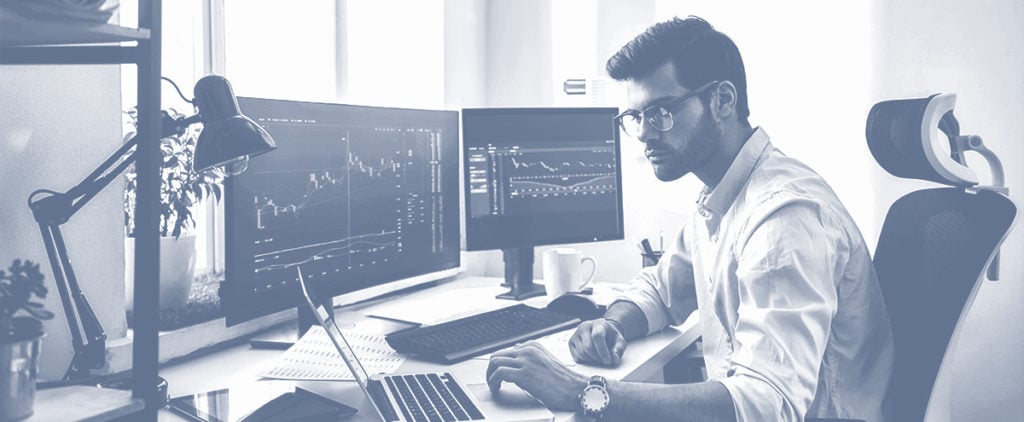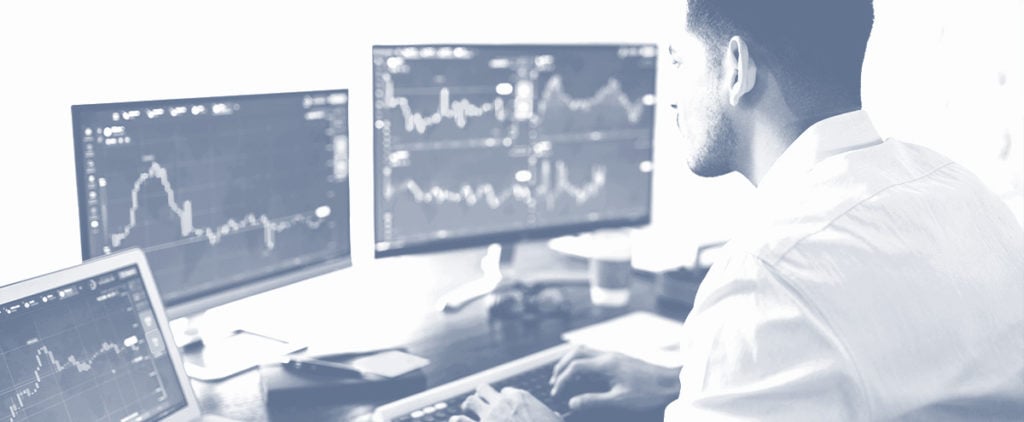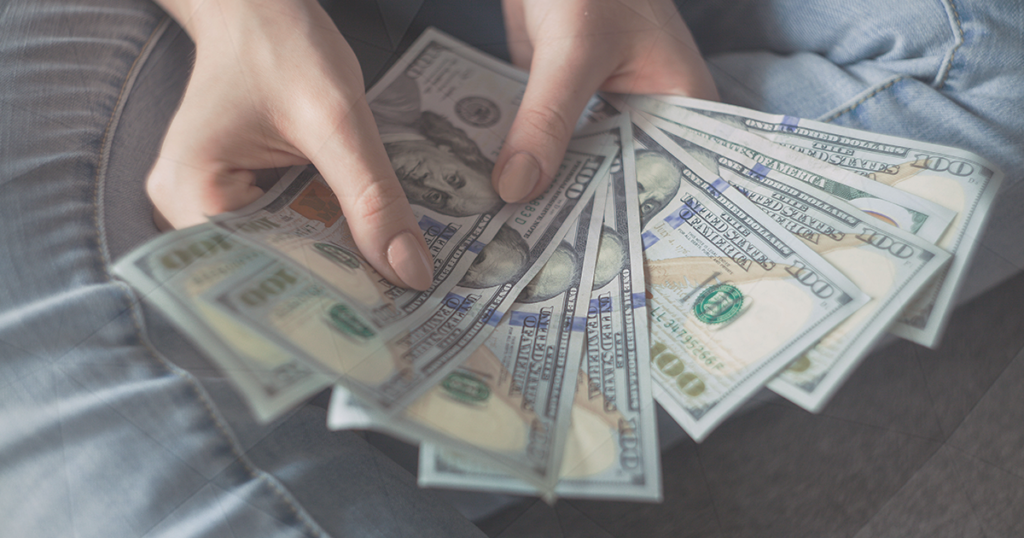Forex Leverage: The Risks and Rewards of Leverage in Forex Trading

Leverage is a concept that attracts a large number of traders to the markets. At first, trading on leverage sounds very appealing to new traders.
That’s because leverage allows them to control a much larger position size than their original trading account sizes.
But here’s the catch:
There is no free lunch in the markets. Leverage has both its pros and cons.
In this article, we’ll take a closer look at what leverage is and how to use it to properly to grow your account.
What is Leverage?
Leverage refers to trading a position size that can be multiple times the size of your trading account. While this might sound appealing at first, always bear in mind that trading on leverage carries certain risks that can’t be underestimated.
Higher position sizes and trading on high leverage magnifies not only your profits but also your losses. Trading on high leverage is arguably the most common reason why new traders blow up their accounts in record time.
Nevertheless, leverage can be a powerful tool and help you turbo-boost your account growth, but only if you apply it responsibly and use proper risk management rules.
Leverage has boomed in the last few decades. While investors had to take a Lombard loan in the 80s – a loan backed by securities – modern traders have access to high leverage ratios with the press of a button. Depending on the assets you are trading, retail brokers offer leverage ratios that can go up to 500:1. That’s 500 times your initial trading account!
A trader with a $1,000 account can control up to $500,000 on the market. However, more realistic leverage ratios would be 5:1 for stocks, 15:1 for futures, 30:1 to 50:1 for Forex if you’re trading with an EU broker, and 100:1 to 500:1 for Forex if you’re trading with an overseas broker.
- Learn more, take our premium course: Trading for Beginners
How Does Leverage Work?
When trading on leverage, you’re taking a loan from your broker. The broker requires collateral for the loan, which is called the margin, learn all about margin trading products on our free course here. The margin depends on the leverage ratio you’re using in your account.
When your leveraged trade reaches your profit target or stop-loss level, the broker will automatically close your account and return the trade’s margin to your trading account.
When trading on leverage, brokers will charge you a financing rate. Nowadays, those rates are usually quite small and the cost depends on the number of days you’re holding your leveraged trades open.
- Breaking Down Trading Costs (What are all the types of costs?)
- Understanding Brokers (Save yourself thousands in trading costs!)
- Margin Trading Demystified (With real life examples)
- Premium course: Trading for Beginners (With live trading examples)
Leverage vs Margin
So far, you’ve learned that trading on leverage requires you to allocate a small portion of your trading account as the collateral, or margin, for the trade. The required margin depends directly on the leverage ratio you’re using. A leverage ratio of 50:1 requires a margin of 2%, which means you need to allocate 2% of the position size from your own capital. A leverage of 500:1 calls for a margin of 0.20%.
The following table shows how much margin you need to allocate depending on the leverage you are using.
| Margin Required (as % of position size) | Leverage Ratio |
| 5% | 20:1 |
| 3% | 33:1 |
| 2% | 50:1 |
| 1% | 100:1 |
| 0.5% | 200:1 |
| 0.25% | 400:1 |
| 0.20% | 500:1 |
The higher the leverage ratio, the lower your margin requirement. However, as you’re controlling an enormous position size compared to your trading account size when trading on high leverage. A tiny movement of the market against you can lead to high losses and possibly wipe out your entire account. Also, financing costs rise as you are borrowing more money from your broker.
What is a Margin Call and How to Avoid it?
A margin call is a notification from your broker that your free margin has dropped below zero. This notification used to be a phone call (hence Margin Call), but nowadays most brokers simply send out an e-mail or text message to notify that your free margin is rapidly dropping.
Before explaining what a margin call is, let’s revisit some basic trading account terminology, such as balance, equity, margin, free margin, and margin closeout level.
Balance: Your balance is the total funds you have in your trading account, regardless of any floating profits or losses.
Equity: Your account’s equity is your balance adjusted for floating/unrealized profits or losses. For example, if you have a floating profit of $100, your equity will be equal to your balance plus the $100. If you don’t have any active trades, your equity would equal your balance.
Margin: As you already know, the margin field of your account represents the total margin you’ve allocated for your active leveraged trades.
Free margin: The free margin of your account equals the equity minus your used margin. As your losses start growing, your equity starts to fall, pushing your free margin lower.
Margin closeout: The closeout level is the level at which your broker automatically closes all of your active trades to protect your margin (the broker’s collateral) from further losses. The margin closeout level used to be 100%, but nowadays many brokers have lowered the margin closeout level to 50%.
When your free margin drops to zero, any further losses would have to be financed with your allocated margin. Since the allocated margin acts as collateral for your broker, you will receive a margin call that notifies you of an upcoming liquidation of your open positions.
Although receiving a margin call can be quite frustrating, fortunately, there are effective methods to avoid it.
First of all, always keep a close eye on your free margin. You should always have enough room to withstand negative price fluctuations, at least until your stop-loss levels. The best way to avoid margin calls is therefore to adopt strict risk management levels and avoid trading on extreme leverage.
Remember, the higher your position size relative to your trading account size, the larger will be your required margin for those trades. A small free margin leaves little room for losses.
Always risk a small percentage of your trading account on any single trade. This means that you’ll take a smaller position size, allowing your used margin to stay well below your account’s equity.
Forex Leverage Example
Here comes a real-world Forex leverage example. Let’s say you have $10,000 in your trading account and want to trade the USD/CAD currency pair. The price has just broken out of a range, and your analysis shows that there is further upside potential in the pair.
The current USD/CAD exchange rate is 1.30, and your analysis shows that you should place a stop-loss at 1.2950, aiming for a profit target at around 1.3100. Your stop-loss is 50 pips, and your take profit is 100 pips, returning a reward-to-risk ratio of 2:1. Everything looks great so far, the price is completing a pullback to the broken range, and you’re ready to pull the trigger and open a buy position.
By risking 2% of your trading account on any single trade, you figure out that the total risk you want to take on the trade is $200. With a stop-loss of 50 pips, this means that each pip should have a value of $4.
This trade would require a position size of $52,000 to return a pip-value of CAD 5.2, which at the current exchange rate of 1.3 equals USD 4. Without leverage, you wouldn’t be able to take this trade, since your trading account size is only $10,000. However, a leverage of at least 10:1 would do the trick, as you would be allowed to open a position size of up to $100,000. A position size of $52,000 would require a margin of $5,200 with a leverage ratio of 10:1, or a margin of $520 with a leverage ratio of 100:1.
If the trade hits your profit target, you would make a profit of $400, or 4% of your trading account.
Margin call example
Let’s say you take the same USD/CAD trade, but want to risk 30% on the trade. Your total loss would be $3,000 in this case, and your trade would require a pip-value of $60 and a position size of $780,000. With a $10,000 account, you would need a leverage ratio of at least 100:1 to take this position size.
With a 1% margin, your total margin requirement for the trade would be $7,800, which leaves you with a free margin of only $2,200. This means that you would receive a margin call even before your trade hits your stop-loss.
- Fast track, take our premium course: Trading for Beginners
When to Increase Your Leverage?
Trading on leverage can increase both your profits and your losses, so it takes discipline to grow your account with leverage. One mistake could lead to large losses and blow up your account.
So, how should you approach growing a small trading account with leverage?
Here are a couple tips:
- Create an account buffer: Your first goal should be to create a small account buffer of around 20% of your initial trading account. If you’re trading with a $10,000, try to create a buffer of at least $2,000 by using low risks and decent leverage. This will allow you to trade larger sizes with the profits you’ve just made, without risking your initial trading capital.
- Hit the throttle: The next phase of growing a small account is to hit the throttle on high-probability trade setups, using the buffer from the previous step. This means increasing your position size responsibly to take advantage of A+ setups and letting your winners run as much as possible.
For example, you could risk up to $500 per any single trade in this stage. If you return to your initial $10,000, start using tighter risk management rules again until you create a new buffer.
New ESMA Rules and What They Mean for You
In 2019, the European Securities and Markets Authority (ESMA) proposed new rules for EU-based brokers that should help retail traders from taking too much risk in trading.
ESMA suggests the following leverage limits:
- 30:1 leverage on major currency pairs = 3.33% margin.
- 20:1 leverage on major indices = 5% margin.
- 10:1 leverage on commodities (excluding gold) = 10% margin.
- 5:1 leverage on equities = 20% margin.
At first, a leverage ratio of 30:1 on major currency pairs might look too strict, especially to traders who are used to trading on leverages of 100:1 and higher. However, remember our USD/CAD example from above. A trader would need a leverage of only 10:1 to take the trade in USD/CAD by risking 2% of his trading account and having a stop-loss of 50 pips. This is a real-world example, and many traders would take similar trades with similar stop-loss sizes and risk-per-trade rules.
The majority of traders lose money because of a majority of factors. They include:
- Lack of market knowledge
- Poor trading discipline
- Emotional trading
- Poor risk management
For those traders, the new ESMA rules will represent a major hurdle that will prevent them from blowing their accounts.
Here are a few more benefits of the new ESMA rules.
- More time to learn trading
New traders who trade with a lower leverage ratio will have more time to learn to trade as they will likely stay longer in the game. Lower position sizes also mean less fluctuation in the account’s equity, which in turn helps to keep emotions under control.
- Lower risk of ruin
Traders who are new in the market should switch to real trading accounts as soon as they get familiar with their trading platform and the basics of trading on a demo account. Low leverage ratios help those traders to learn how to trade successfully, without the risk of losing their entire account. Of course, losses will still be part of your life even with a 30:1 leverage, but extremely large losses can be greatly avoided.
- Grow your account responsibly
Finally, the new ESMA rules allow new traders to learn how to grow their accounts responsibly. Instead of going all in, traders will be required to learn how to become constantly profitable with smaller position sizes and strict risk management rules. That’s why I recommend you get at the very least a basic level of education before you begin trading.
- Get started, take our premium course: Trading for Beginners
Final Words
Leverage can be a powerful tool to boost your trading profits, but only if you know how to use it. Trading on high leverage magnifies not only your profits but also your losses, making it one of the main reasons why new traders blow up their accounts.
But adopting strict risk management rules, appropriate risk-per-trade levels, and knowing when and how to increase leverage on high-probability setups, traders will be able to take advantage of the positive sides of leverage and accelerate their account growth.





